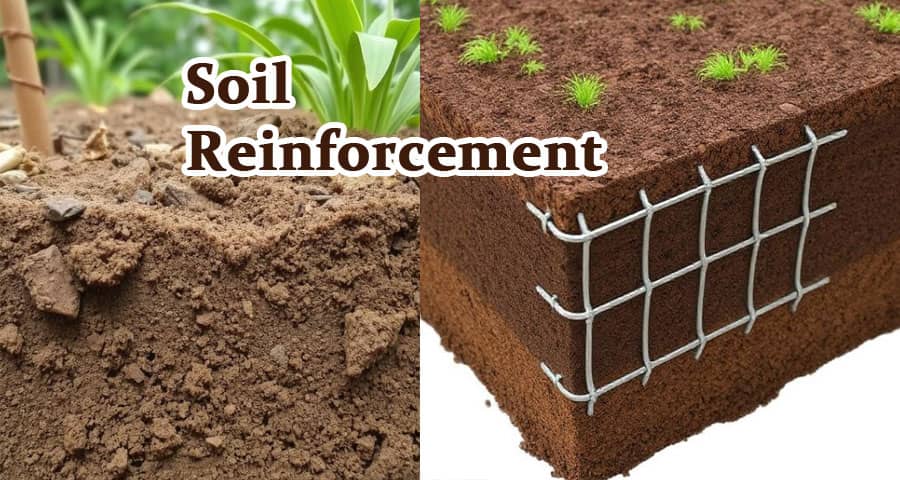What is the Meaning of Soil Reinforcement?

Soil reinforcement is a critical engineering practice that enhances the stability, strength, and load-bearing capacity of soil structures. It is widely used in geotechnical engineering to improve weak or unstable soils for construction and infrastructure projects. By integrating different reinforcement techniques, engineers can create a more durable and long-lasting foundation for roads, bridges, retaining walls, and embankments.
The Concept and Purpose of Soil Reinforcement
Soil reinforcement is based on the principle of increasing soil's shear strength and reducing its deformation under stress. This is achieved by adding reinforcing materials such as geosynthetics, metal strips, or natural fibers into the soil to improve its overall stability. The primary purposes of soil reinforcement include:
- Enhancing load distribution: Reinforced soil spreads the applied loads more evenly, preventing excessive settlement and deformation.
- Increasing soil strength: Weak or loose soil gains improved cohesion and shear resistance.
- Reducing erosion and displacement: Reinforced soil structures withstand environmental factors such as wind and water erosion.
- Allowing for steeper slopes and embankments: Reinforced soil enables the construction of steeper slopes without compromising stability.
Types of Soil Reinforcement Methods
1. Geosynthetics Reinforcement
Geosynthetics are synthetic materials specifically designed to reinforce soil. These materials include:
- Geotextiles: Permeable fabrics that provide separation, filtration, and reinforcement.
- Geogrids: Grid-like structures that enhance the mechanical properties of soil by interlocking with soil particles.
- Geocells: Cellular confinement systems that distribute loads and prevent soil movement.
2. Metallic Reinforcement
Reinforcement using metallic strips, bars, or mesh is a traditional method that provides additional strength to soil structures. It is commonly used in retaining walls and bridge abutments to prevent soil failure under heavy loads.
3. Natural Fiber Reinforcement
Eco-friendly soil reinforcement techniques involve using natural fibers like coir, jute, and bamboo to improve soil properties. These biodegradable materials are ideal for temporary applications such as slope stabilization and erosion control.
4. Mechanically Stabilized Earth (MSE)
MSE walls and slopes are constructed using compacted soil layers and reinforcing elements such as geogrids or steel strips. This method is highly effective for retaining structures, embankments, and highway slopes.
5. Soil Nailing
Soil nailing involves inserting steel bars or rods into soil to enhance its shear strength and stability. This method is frequently used in steep slopes, tunnels, and excavation sites.
6. Deep Soil Mixing
Deep soil mixing improves soil characteristics by blending it with cement or other stabilizers to form a stronger composite material. It is often applied in foundation improvement and liquefaction mitigation.
Applications of Soil Reinforcement
Soil reinforcement is utilized in various construction and engineering projects to enhance soil performance. Some of the most common applications include:
- Retaining Walls: Reinforced soil structures support vertical or near-vertical walls, preventing landslides and soil collapse.
- Road and Pavement Construction: Reinforced soil stabilizes road subgrades and reduces rutting and settlement.
- Bridge Abutments: Soil reinforcement enhances the stability of bridge foundations, ensuring long-term durability.
- Embankments and Slopes: Reinforced soil allows for the construction of steep embankments with improved resistance to erosion.
- Tunneling Projects: Soil reinforcement is used to prevent tunnel collapses and maintain structural integrity.
Advantages of Soil Reinforcement
1. Cost-Effectiveness
Reinforcing soil eliminates the need for costly deep foundations or soil replacement, reducing overall construction expenses.
2. Increased Durability
Reinforced soil structures exhibit greater resilience to environmental factors, ensuring long-lasting performance.
3. Environmentally Friendly
By using natural or recycled materials, soil reinforcement minimizes environmental impact and promotes sustainable construction.
4. Improved Load-Bearing Capacity
Enhanced soil strength allows for greater load distribution, making it suitable for heavy infrastructure projects.
5. Flexibility in Design
Soil reinforcement techniques provide versatility in engineering solutions, allowing for the construction of complex structures in challenging terrains.
Challenges and Limitations
While soil reinforcement offers numerous benefits, there are challenges to consider:
- Material Selection: Choosing the right reinforcement material is crucial for achieving desired performance.
- Installation Complexity: Some reinforcement techniques require specialized equipment and expertise.
- Long-Term Performance: Factors such as weather conditions, soil properties, and maintenance affect the longevity of reinforced soil structures.
Conclusion
Soil reinforcement is an essential technique in modern construction, offering a practical and efficient solution for stabilizing weak soils. By employing various reinforcement methods, engineers can enhance soil properties and ensure the durability of infrastructure projects. Whether for road construction, retaining walls, or embankments, soil reinforcement plays a pivotal role in creating safe and stable structures.
Please watch the following short video for soil reinforcement
